- Demolition
Excavators/bulldozers capable of demolishing existing buildings will be at least 10-12 feet wide. It (or they) will be transported on a flat bed RGN (removable gooseneck) trailer or similar. The trailer will be around 12-14 feet wide and unable to negotiate Park Drive concrete swamp road or roundabout without damage to the carriageways and roadside Nawasa pipework outside of residences. Loaded, the vehicle will be around 12-14 feet high, enough to remove some Grenlec and internet cables.
On site, the demolition work will send dust from breaking up concrete and other old building material into all neighbouring residences. It is not know how toxic these particulates are because no analysis has been done.
The resulting demolition debris will include the superstructure and foundations of the existing buildings and roads, soil excavated to level the site and to accommodate the basement level of the proposed new buildings, the old swimming pool and protecting wall, tennis court etc. This will all be broken up and loaded into heavy dump trucks. It is estimated that some 50 of the largest dump trucks will be needed if some of this debris can be used for construction infill. In practice, not much of it will be and the number of trucks could double to 100 loads thus creating 200 truck journeys (half returning empty) over the two months or so of site clearance work. In addition, around 2.5 acres of old established woodland would have to be cut down, roots bulldozed out, sawn into truck-sized pieces and removed. This could fill another 100 trucks or skips (200 truck journeys).
The average width of these dump trucks is 8.5-9.0 feet. Two of them will not be able to pass each other at some points on the roads to the site.

- Construction
Concrete structure
Ready mix concrete deliveries would be used for the basic construction. Approximately 1000 deliveries would be required (more depending on the size of drum) for the main rooms building, other buildings and external works. So some 2000 ready-mix truck journeys will pass every residence on the L’Anse aux Epines and Park Drive or Coral Crescent roads during the initial construction period of some 12 months.
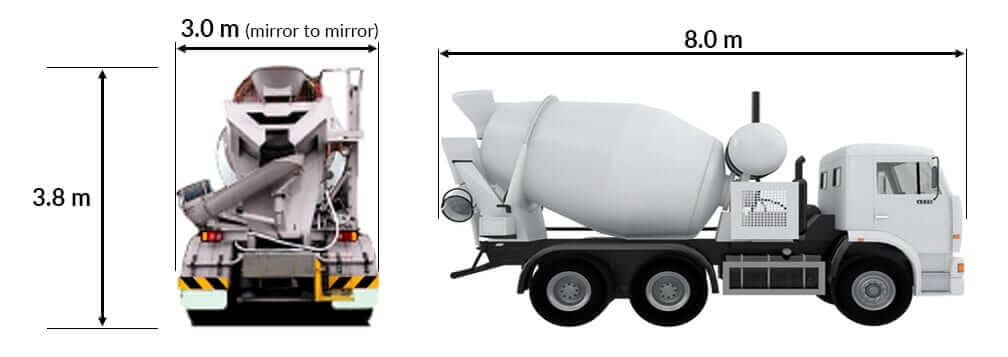
These vehicles are approximately 3m (almost 10 feet) wide including mirrors. Two will not be able to pass each other on the concrete road swamp section of Park Drive without one or both driving off the concrete surface and onto the ground beams supporting this road, doubtless spilling concrete and damaging road edges. They are around 13 feet high and also risk damage to overhead cables and poles. There would also be pumping equipment.
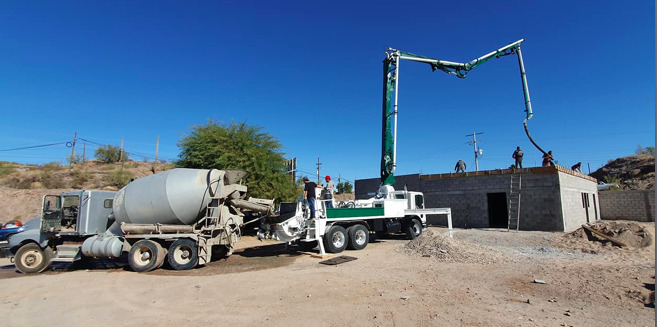
As we see regularly elsewhere, there will be concrete spills on road bends and speed humps and drivers will wash concrete slurry out their drums wherever they can get away with it – as in this photo from the press.
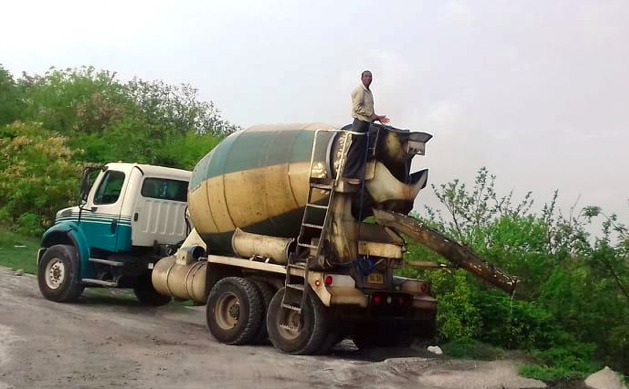
General Building Materials
These will include fill material (tiff or gravel), concrete blocks, steel reinforcement, formwork, cement (for render etc.), topsoil, landscaping etc. They require a variety of trucks including flat bed, dump trucks and smaller vans in a constant stream over the whole construction period. There will also be transport for site workers and private cars and vans for sub-contractors, managers etc.
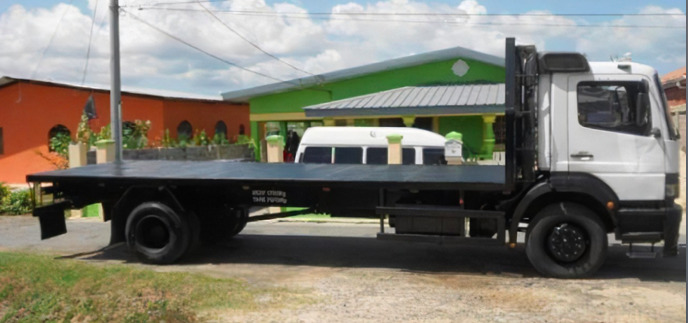
It is estimated that a minimum of 500 large trucks will be required (1000 vehicle journeys) plus another 500 small vehicles (1000 vehicle journeys) over the construction period.
Finishes, fitting out, furniture and equipment
Fixtures, furniture and equipment plus other construction materials will all be imported (from China no doubt) and would arrive in 40 feet container trucks from the port. There will need to be around 100 of these. It is not clear that they could negotiate the concrete section of Park Drive and the small roundabout. If not, the contents will have to be repacked into smaller containers somewhere between the port and Park Drive. If these were 20 feet containers then some 200 trucks will be arriving and 200 leaving empty, making 400 container truck trips.
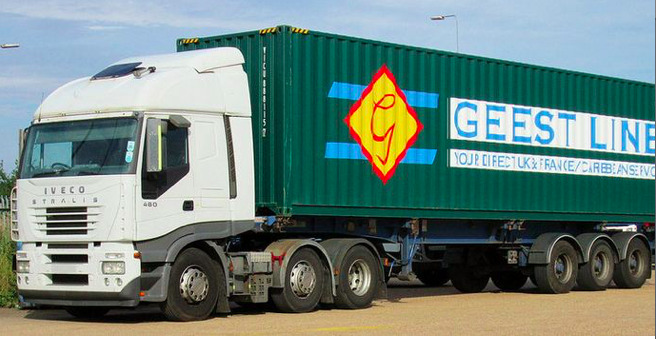
There will not be space on the small congested Coral Cove site to park containers for very long. We can anticipate them lining the public access road near to the site entrance and outside residences. Turning will also be problematic on site and vehicles may have to be turned on the public access road and reversed into the site.
- Removing construction debris
Building creates large amounts of debris throughout the construction and fitting out process and this has to be removed from the site. It includes excavated material (that was not excavated precisely by the heavy machinery earlier), used concrete shuttering, packaging, surplus and damaged materials etc. These will be removed by various vehicles but mainly by large skip trucks.
We understand from builders that Silver Sands generated approximately 1500 large skips over a 12-month construction period (3000 vehicle journeys). Silver Sands is 52 rooms. The development proposed for Coral Cove is equivalent to about 90 rooms.
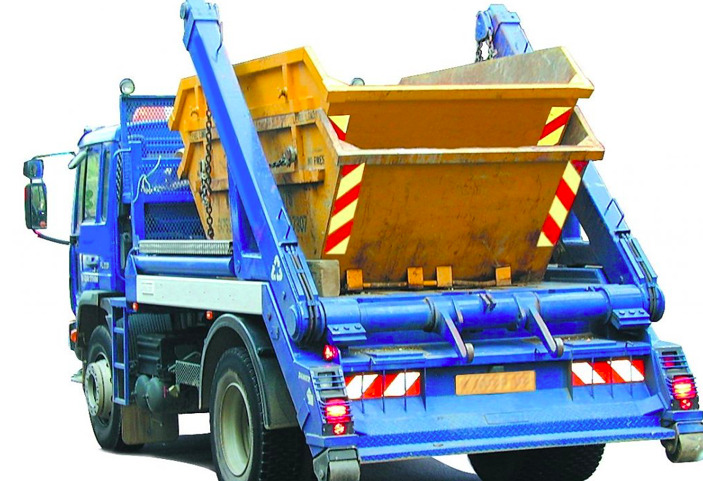
Skip trucks are about 3m wide (almost 10 feet) and again, will have difficulty in passing each other and other heavy vehicles on Park Drive and on parts of the L’Ance aux Epines road.
- Summary
Building a 80-90-room hotel complex accessed through an established low density residential area is totally unacceptable. Construction alone will cause massive disruption and risks to the health, safety and welfare of residents, visitors and road users in the whole L’Anse aux Epines area and will also put critical pressure on the wider road system including pressure points currently operating over capacity at peak hours. Some 9,000 truck journeys will pass every point on the access roads during the construction period – and then the hotel operational traffic will start!
Loaded dump trucks and ready mix trucks can weigh 20-25 tons or more. Thousands of these vehicles will wreck the residential roads through subsidence, surface potholes and edge breakage and the vibration caused will damage house structures and walls near to roads. Utility cables and pipes will be damaged, and there will be noise and dust from demolition vehicles removing broken-up old concrete. There will be concrete spills making raised lumps on roads. Ready mix trucks will be queuing to get into the site and looking for places to wash out their drums on exit. Containers will be parked along roads outside residences. There will be road accidents and pedestrians and dog walkers will be especially vulnerable. Some residential entrances and exits between Prickly Bay and SGU Club are especially at risk.
Whilst the Park Drive narrow concrete swamp road problem can be avoided by accessing via Coral Crescent, this just moves the problem somewhere else and affects even more residences. And the problem of big trucks negotiating narrow residential roads and the small roundabout and site access road remains.
This is not the location for such a big development. It can support only a small eco-lodge type of facility maximising the use of refurbished existing structures maximising carbon sink materials and minimising concrete.
For more details on what is proposed and the damage it will cause to the environment, please go to our website where you will also find what you can do to oppose this development and register to receive updates: www.coralcovegrenada.org
We are a group of citizens opposed to a big hotel development at Coral Cove, L’Ance aux Epines and on inappropriate fragile sites elsewhere in the country. Contact us: